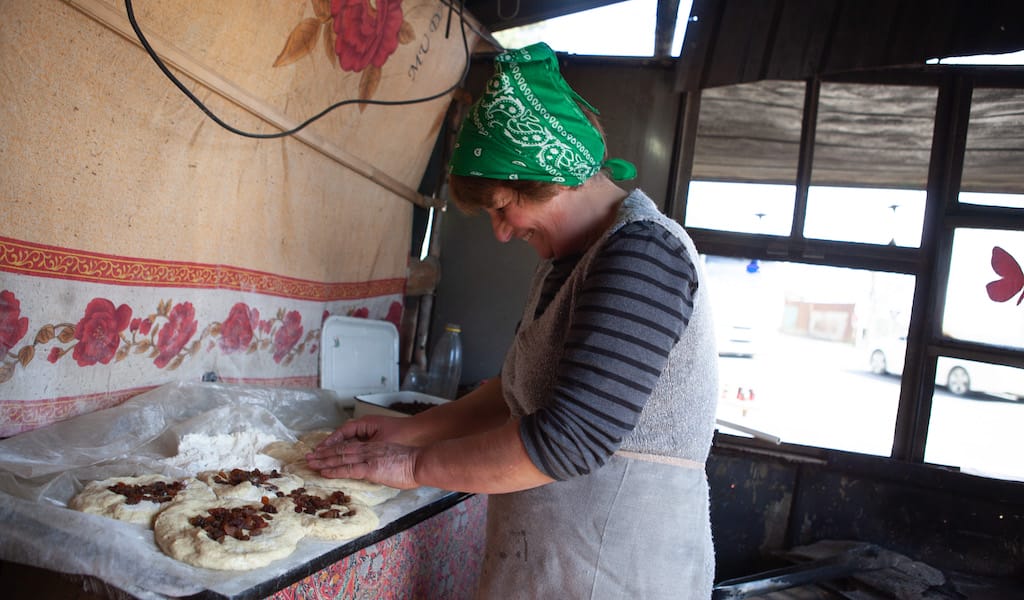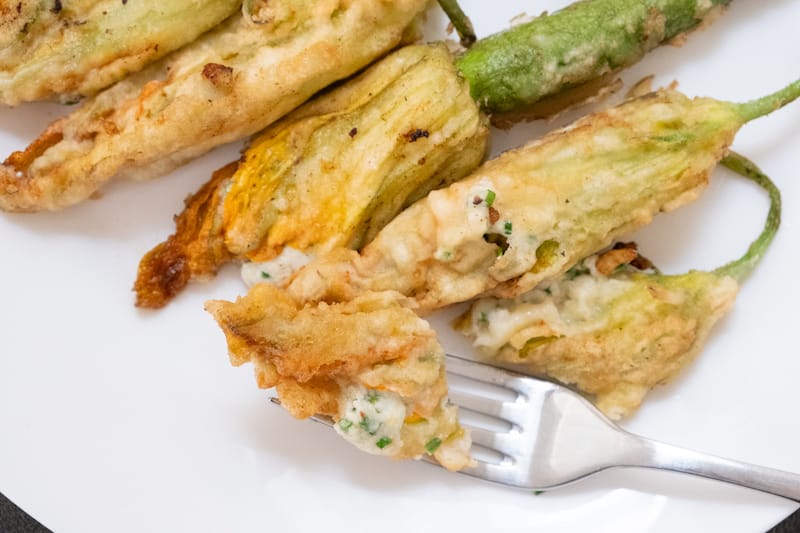In Georgia, there are certain dishes that everyone associates with Orthodox Easter: paska, a sweet panettone-like bread and chakapuli, a lamb stew. However, there is another Georgian Easter tradition, one often overlooked: nazuki. Beautifully glazed and filled with raisins and spices, in recent years these fluffy sweet breads have become associated almost exclusively with the village of Surami in the Kartli region. In this small settlement between Tbilisi and Kutaisi in the West, huts line the side of the highway, each with a tone (a cylindrical traditional oven), a baker and a family nazuki recipe.

Here, the work day starts at 5 or 6 a.m., when bakers begin preparing their bread, meaning that early morning (around 7 a.m.) is the best time to buy a fresh loaf if you’re driving through. Once the bread has finished baking, a process that only takes about 3-5 minutes, it is stored in the tone to keep warm. Although there are many sellers to choose from, nazuki bakers have to work hard to keep up with the demand. Manana, a local baker, tells us, “I make twenty to thirty in a day and on the weekend and summer I make more, sometimes even up to one hundred and fifty. I have clients who I make them for specifically.”

Nazuki are a traditional part of the Easter celebration that evolved into a roadside treat in Surami after enterprising sellers began offering them to motorists and visitors in place of the typical bread and cheese. “I’ve been here twenty years. My mother and grandmother did not make [nazuki] here on the road; she only made them at home for Easter,” says Manana. However, even this more recent road-trip tradition is now at risk, with a new highway being built outside the village. Although some bakers expect to move when the route is completed, it is unclear how this tradition will endure.

Each baker has their own technique, with recipes often handed down from mother to daughter; there are different quantities of spices, different ratios of yoghurt and milk; sometimes, the addition of matsoni or condensed milk as well. This recipe comes from home baker Nuna Abuladze in Mukhrani, Kartli with additional tips from the bakers in Surami. This year, they will be baking their Easter nazuki on May 5th for the Orthodox Christian Easter. The recipe makes 15 nazuki, ready for a family feast, but for a smaller celebration, you can divide quantities by three to make five nazuki.

Ingredients
- 5 kg flour (highest quality)
- 100 g yeast
- 2 L milk
- 1 stick of butter (250 g) cut into cubes
- 1 1/2 kg sugar
- 100g raisins
- 2 small vanilla pods
- 1 teaspoon each of nutmeg, cloves, and cinnamon
- 1/2 teaspoon turmeric (this is optional, but lends a lovely pale-yellow color)
- 2 1/2 tsp of salt
- 5 eggs
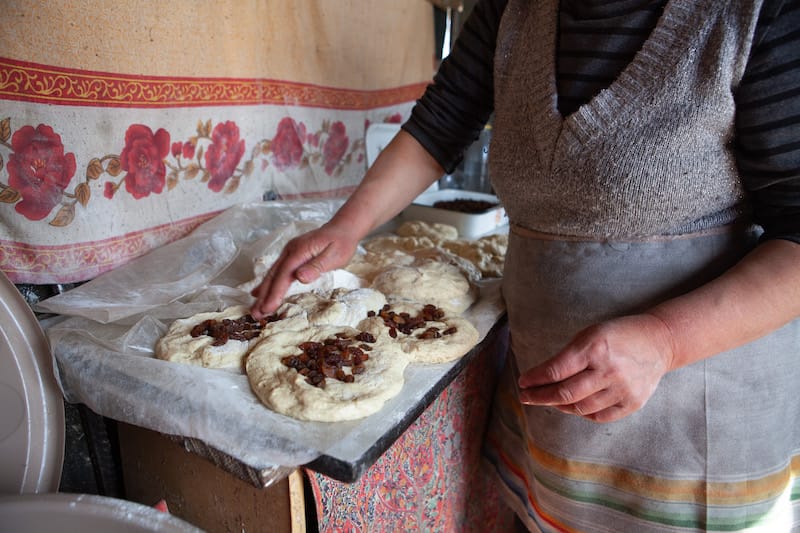
Method
To begin, take the raisins and wash them to ensure that they are clean and free from any debris. Dry them carefully before moving on to the next step to avoid introducing any additional moisture into the recipe.
Warm the milk up slightly, either in the microwave or on the stove. Using warm milk will help to activate the yeast. You can check the temperature by dipping the tip of a finger into the milk. Once it feels slightly warmer than body temperature, mix the yeast into the milk and let it sit for a few minutes to activate. Next, mix together all of the ingredients except the eggs, raisins, and vanilla.
Knead the ingredients lightly until they come together in a smooth dough, then cover it up with a tea towel for 10 minutes to keep it warm and wake the yeast up. Split your dough into 15 equal portions and lightly shape them into low ovals. Cover them to keep them warm then leave for one hour to rise. While the dough is rising, set your oven to its maximum temperature.
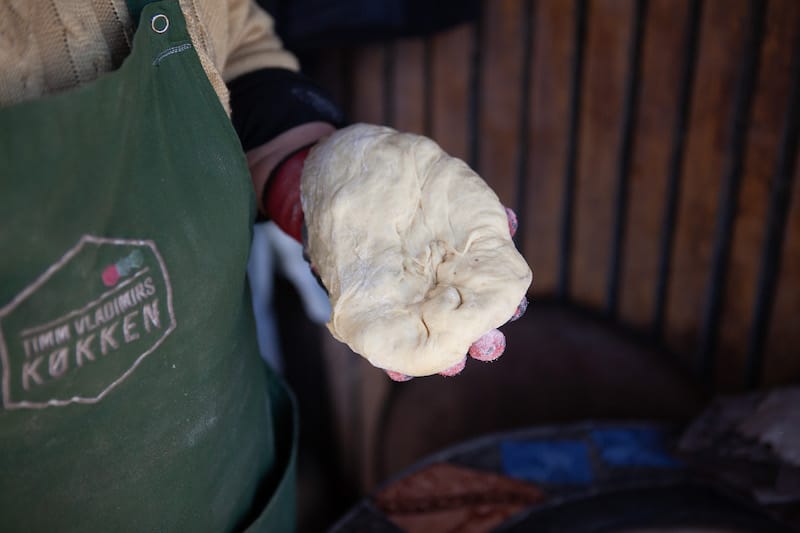
Once the dough portions have risen, remove each piece and flatten it by pressing it out with your fingers. Take a portion of raisins and sprinkle them evenly in a line through the middle of each nazuki. Fold the dough back over the raisins to cover them completely and pinch it gently closed. Sprinkling the raisins at this stage will ensure an even distribution of them in each piece! In Surami, nazuki are usually shaped like a flattened bean, but many are also an elongated oval, so you can pick your style.
Place each individual nazuki on a lined baking tray, leaving some space between them as they will expand a little while baking. Finally, beat the five whole eggs together with the vanilla and brush the egg wash on the top of each nazuki before baking. The egg wash will give the outside a beautiful, shining glaze.
The bake time on your nazuki will vary depending on your oven, so continue to check them from five minutes onwards. They are ready once the outsides are a deep chestnut brown with a shiny finish. The bread should be fluffy on the inside and crispy on the outside.
Nazuki are best eaten fresh out of the oven when they are at their fluffiest, so give them a couple of minutes to cool and then enjoy!
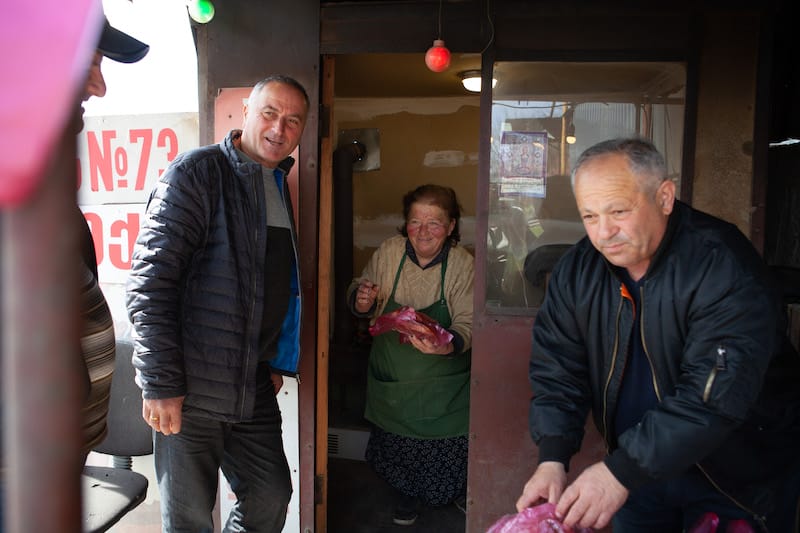
 July 17, 2024 Recipe
July 17, 2024 Recipe
Back in the day, according to legend, a man named Köpoğlu spent all his money on rakı, […] Posted in Istanbul July 4, 2024 Recipe
July 4, 2024 Recipe
Summer markets in Marseille come alive, bathed in a colorful, brilliant bounty when […] Posted in Marseille June 25, 2024 Recipe
June 25, 2024 Recipe
We’re in Os Papagaios, the restaurant Joaquim Saragga oversees in Lisbon’s Arroios […] Posted in Lisbon
Rowan TwineRowan Twine
Published on May 03, 2024
Related stories
July 17, 2024
Istanbul | By Lian Penso Benbasat
IstanbulBack in the day, according to legend, a man named Köpoğlu spent all his money on rakı, the Turkish spirit made from grapes and anise, and was left with no money to buy food. Hungry, pockets empty, he went home and grabbed a couple of eggplants, some tomatoes and garlic from his garden and threw…
July 4, 2024
MarseilleSummer markets in Marseille come alive, bathed in a colorful, brilliant bounty when fruits and vegetables are in their prime. There are over 25 open markets in Marseille and, every Saturday, our mornings are booked. We set out to one of our neighborhood favorites, the market at Place Sébastopol in the town center, to search…
June 25, 2024
LisbonWe’re in Os Papagaios, the restaurant Joaquim Saragga oversees in Lisbon’s Arroios neighborhood, where we’ve asked him to show us how to make one of Lisbon’s more iconic dishes: ervilhas guisadas, peas braised with Portuguese sausages, typically crowned with poached eggs. Come spring, Portugal revels in green-hued produce: fava beans, asparagus, artichoke, spinach and other…







































